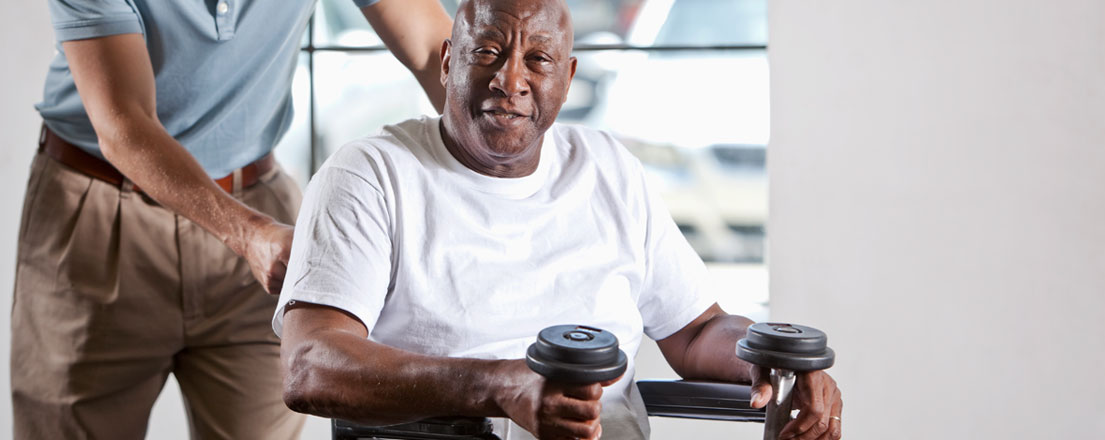
Wheelchair Workout: Expert Tips for Mobility and Strength
Most wheelchair users can benefit from resistance and strength training and enjoy aerobic exercise. The upsides include less risk of depression, improved breathing, toned muscles and less fat. Very few people in a wheelchair are so restricted that they can’t do minimal exercise, says Dr. Victoria Dooley of Northville-Novi Family Medicine, St. John Providence Hospital in Novi.
Moderate workouts can improve blood circulation, spine stability and posture in patients recovering from injuries, strokes or heart attacks. Exercise might even ameliorate long-term disabilities like multiple sclerosis.
For most workout newbies, low-impact exercises work best. Swimming improves fitness and instills freedom of movement. The gentle motions of tai chi and yoga can improve lung capacity and balance while building energy. And rowing can reduce pain in people with spinal cord injuries.
Check with your doctor first, of course, to make sure you’re ready. Dooley has her patients meet with a physical therapist to learn appropriate workouts.
“Physical therapy is empowering,” she says. Look for a therapist who has worked with individuals in wheelchairs.
If you’re in a chair temporarily, exercise could get you on your feet sooner. And, says Dooley, if you are having trouble moving, use a walker or cane and keep the wheelchair as a last resort. “If you don’t use your muscles, you lose them,” she says.
Easy does it
Start slowly and give your body time to accommodate new movements. Warm up first to keep muscles limber and reduce pain later. Cool down afterwards. And always lock your chair when you are exercising in it, Dooley says.
Focus on good posture to strengthen your abdominal muscles and bolster your workout. Make sure your chair is also ready – worn cushions and padding can hurt your posture and lead to injuries.
“Good equipment will maximize your workout,” Dooley says. If you start to feel dizzy, stop exercising for the day and check with your doctor or physical therapist.
Maybe you’re twisting excessively and stressing your nerves and muscles. Changing your routine could solve the problem. Medications could also make you dizzy. Your doctor may consider dropping some medications or reducing dosage.
Keep a water bottle nearby to stay hydrated throughout your workout. Patients with heart disease or stroke might need to drink less water. Check before you start.
Categories: Get Moving , Get Healthy
